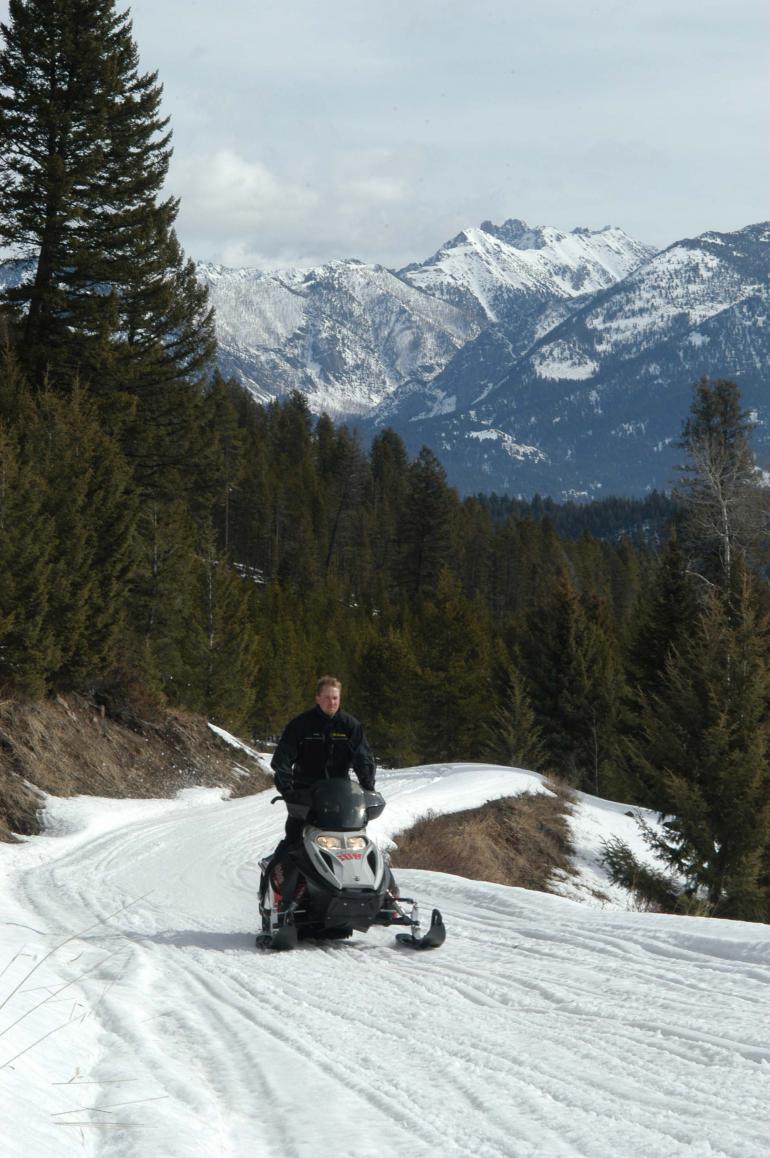Different Strokes
Two-stroke, four-stroke, what's the difference? I found out on my two-day adventure on snowmobiles through Yellowstone National Park. It was a cold winter day when a couple of friends and my boyfriend and I began our trek. As we entered through the west entrance late afternoon, my excitement grew, as this was my first trip inside the park. Since this particular journey, I have visited the park during its peak summer season, and I have to tell you, there is nothing like cruising through the gates to find no traffic lines in the winter.
The sun was setting quickly and the snowstorms were headed our way. It was magic hour in Yellowstone. We followed the Yellowstone River at one stretch and watched as a bald eagle took flight and guided us down the snow-packed road a good mile. I held onto my driver tightly, listening to the air as it rushed by and the quietness of our four-stroke-engine snowmobile. Along the way we stopped to enjoy several geyser basins, witnessing the steam rising off the thermal pools, mixed with the stiff chill in the air, engulfing us in sulfurous odor. We felt like astronauts with our helmets on, driving our machines out into this foreign world. We finally made it to Old Faithful to find that we were the only ones there for our own private show. Afterward, we turned in for the night at the Old Faithful Snow Lodge, energized for what the next day might bring.
The next morning, we got up early to catch the sunrise up over Yellowstone Lake. As we watched the park come alive that morning, it was easy to imagine what it must have felt like when the Native Americans and Lewis and Clark first saw all of this wonder. How wonderful that the park is still intact, still wild, still similar to the way they saw it-minus the roads, lodges, restaurants, and vehicles, of course. What a pleasure though, that there are easy ways for us to gain access in winter to be amongst this vastly different world.
We continued on our journey, passing through Hayden Valley and then making a pit stop at the Grand Canyon of the Yellowstone, where we had our first run-in with the others. We had seen several snowmobile riders throughout the day, passing by, giving us the secret snowmobile wave, but we had not yet encountered any of them face to face. This particular group, who I will call the Pinkies (they all wore matching hot-pink outfits), was very interested in our snowmobiles. They were all riding two-strokes, all fifteen of them. We felt a little inferior in our mountain-man, sheepskin-coat get-ups, but nonetheless, with our helmets held to our sides, we approached them like Top Gun fighter pilots. They asked us how fast we could go. And we told them our snowmobiles could get up to 55 miles per hour-but of course we've been keeping them at a cool Yellowstone Park 45 mph speed limit. We haven't sneaked up on a buffalo yet, and we haven't noticed any deer coughing. Needless to say they were amazed that our machines no longer have to mix oil and gasoline to run and that we are getting twice the mileage they were. The simple truth, we told them, is that the four-stroke is designed to run quieter and without the fumes reeking of burning oil typical of any two-stroke engine. The Pinkies appreciated the new information and they gave us the secret wave when they rode out. We strapped on our helmets and gave each other the time-to-ride hand signal and then we headed off toward the west entrance.
Will the four-stroke make the cut? That hasn't been determined yet. However, it might be the only option if snowmobiles are to remain in Yellowstone. So maybe this winter, check these new sleds out and maybe in the future you might still be racing the sunset, guided by a bald eagle, one winter night in Yellowstone National Park.






